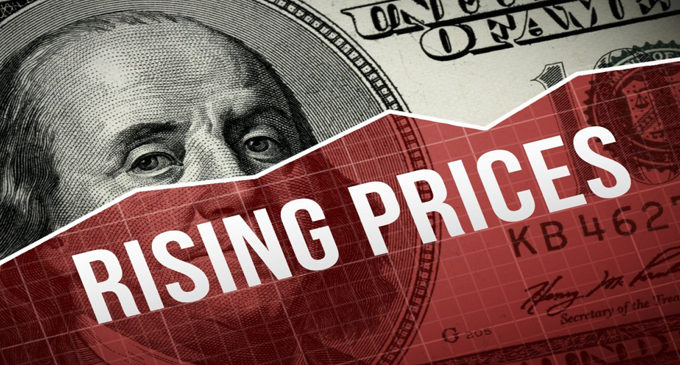Commentary: Consumer prices are skyrocketing, but what’s driving the spike?

By Algenon Cash
A quick study of economics will inform us that “prices” lead to efficiency in the use of scarce resources. High prices is not the reason everyone is unable to live on the beach front, but instead the reality is that there is not enough beach-front homes for everyone and prices simply communicate the underlying reality.
When you take a moment to examine the cost of gasoline, you uncover a number of factors that influence its price.
For example, geopolitical issues such as terrorism in the Middle East, stronger global demand for oil, lack of domestic refining capacity, federal and state taxes. All of these factors determine the price we pay at the pump for the use of a scarce resource. Gasoline prices are up 42.1% annually.
Consumer prices are skyrocketing and families are feeling the pressure as prices for household staples like milk, paper supplies, coffee, beef, and produce spike nationally. Walk in your local grocery store and you’ll see empty shelves and traditional items such as poultry completely out of stock or priced too high for the average family budget.
Poultry prices increased 12.6% year over year and overall consumer prices have climbed sharply in 2021, reaching 5.4% in September, compared to last year.
Companies across multiple industries blame the price increases on expanding demand and endless supply chain disruptions. Labor shortages at major ports, warehouses, distribution centers, processing facilities, and logistical firms are slowing operations to a crawl.
Family farms in North Carolina with produce crops are forced to destroy okra, green beans, and collards still in the ground simply because upstream production and transportation is unavailable. When supply falls while demand remains high, naturally prices will swing higher.
Wages in every industry is on the ascent too. Some growth driven by market fundamentals, for example, retail giants such as Amazon and Walmart have been on a hiring frenzy. They both are recruiting entry level workers at $17-$22 per hour and that will cause more pressure on lower wages to recalibrate.
A growing number of municipal and state governments now mandate higher minimum wages. The push to get every man, woman, and child earning at least $15 per hour is straining small businesses.
In a recent market survey with restaurant owners across various service categories, nearly all participants expected to raise menu prices 15 – 20% in Q4.
Federal Reserve officials are not pressing the panic button quite yet and have called the current inflation trend “transitory,” and connect the price spikes to supply chain and demand issues that they fully expect to subside in the coming months.
Those believing inflation won’t be a major factor in 2022 could possibly be hoping more than developing a fact-based hypothesis. Right now the average family’s wallet is shrinking as they plow more income toward food, energy, and shelter.
If prices continue to rise, then families will have less available discretionary income for going out to eat, taking trips, or buying holiday gifts. The real and present danger is that we enter a territory of “stagflation” – an event where prices continue rising while economic output stagnates.
Algenon Cash is the managing director of Wharton Gladden, a boutique investment banking and consulting firm headquartered in North Carolina. Reach him at acash@whartongladden.com.










